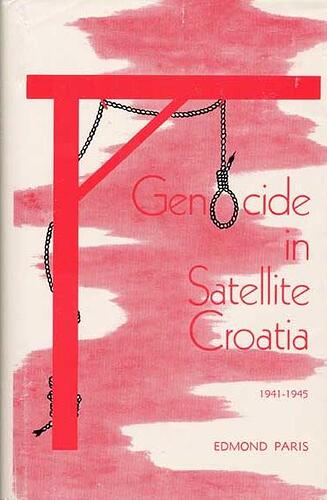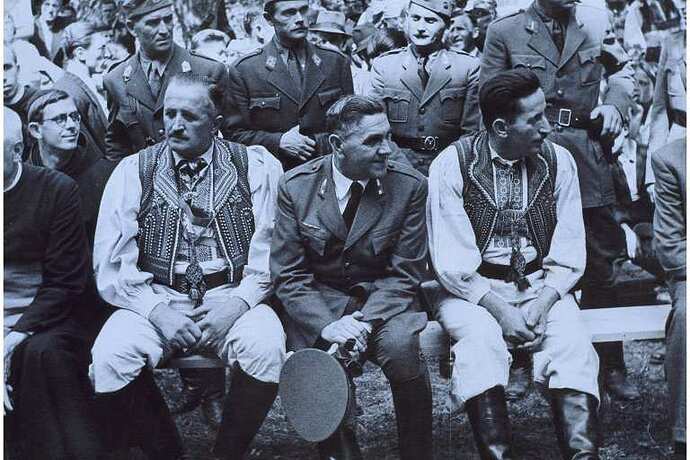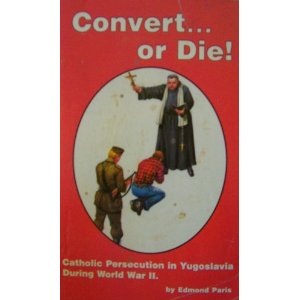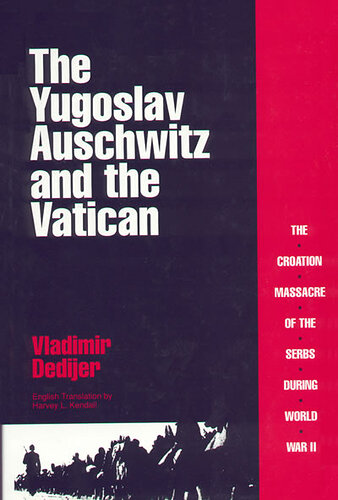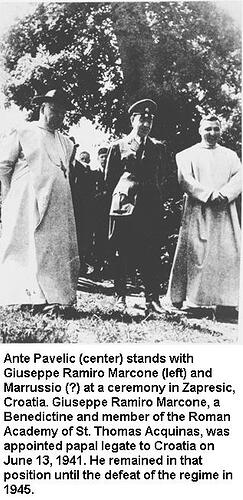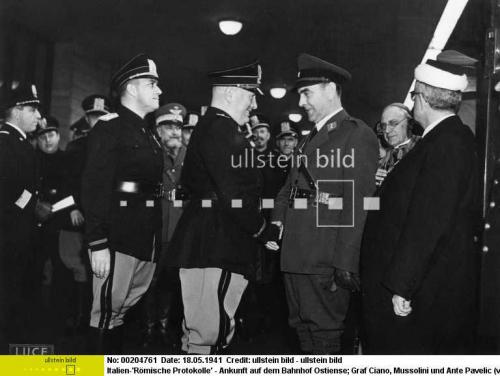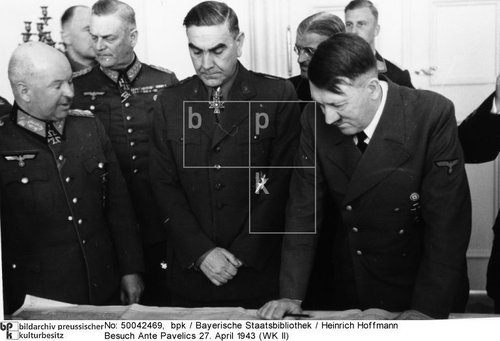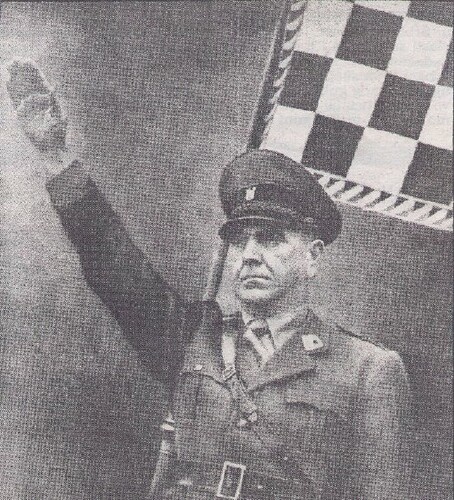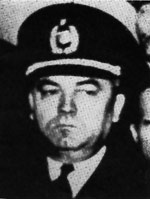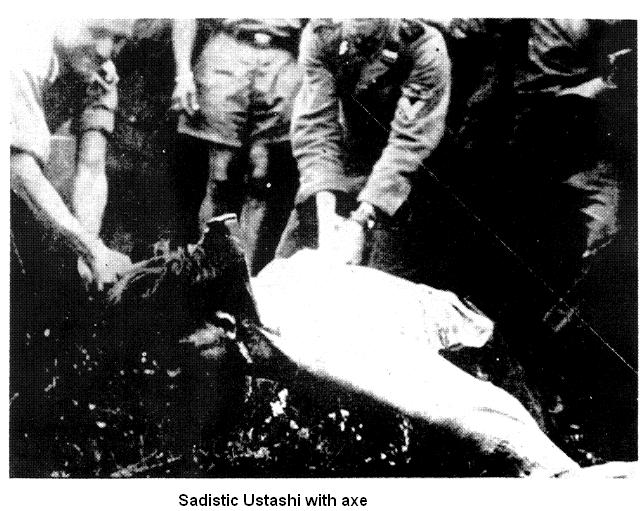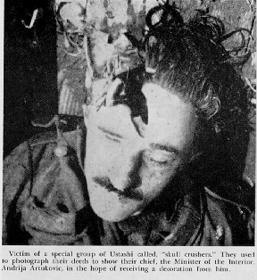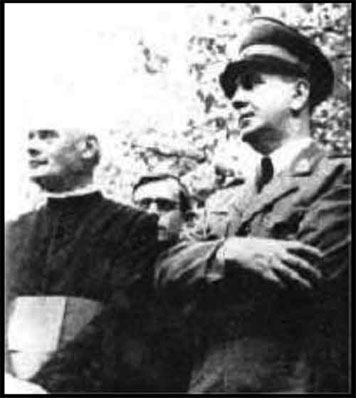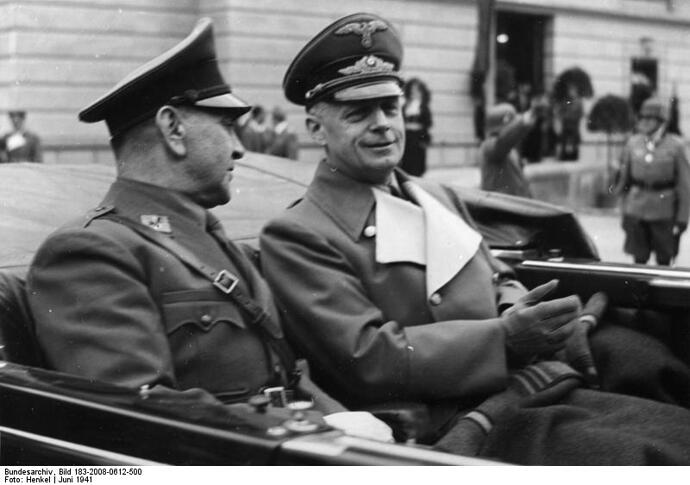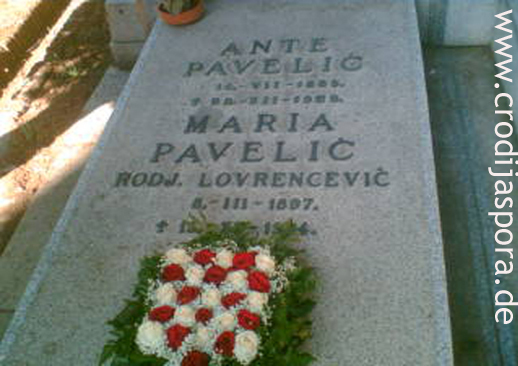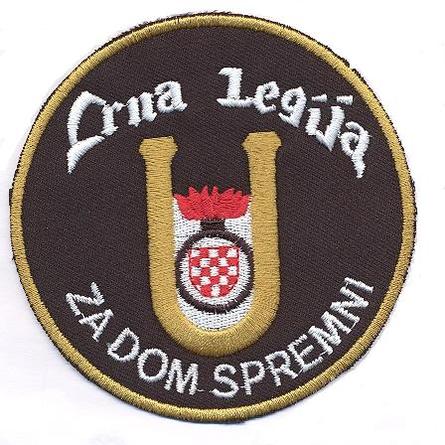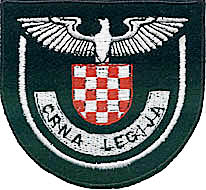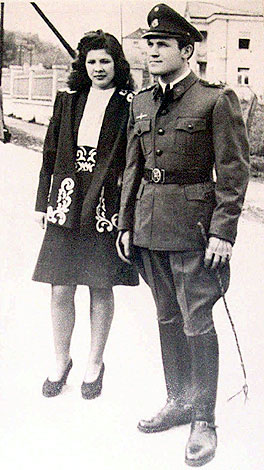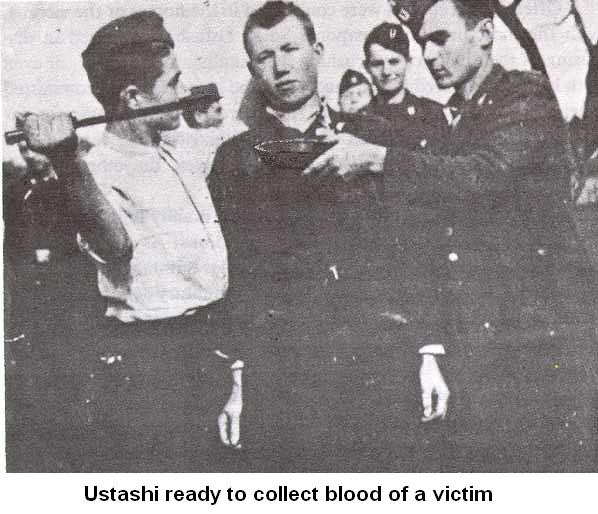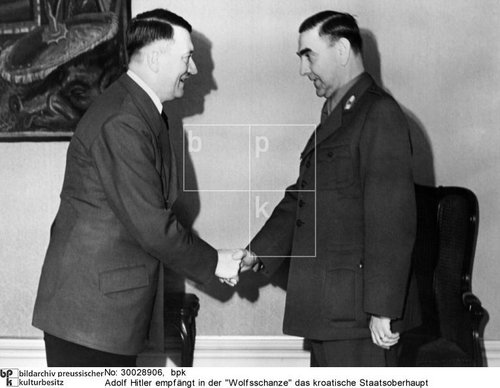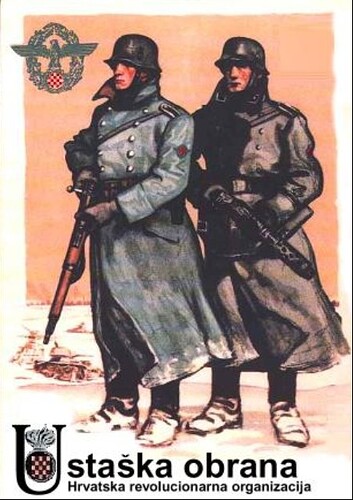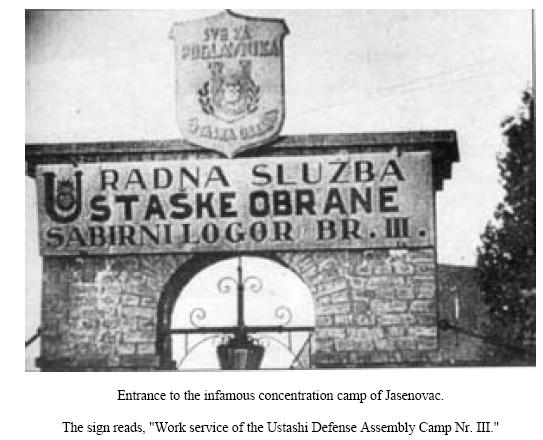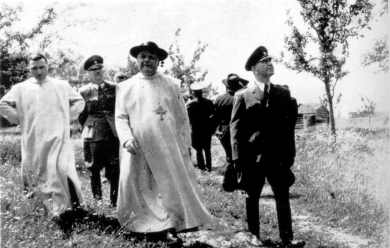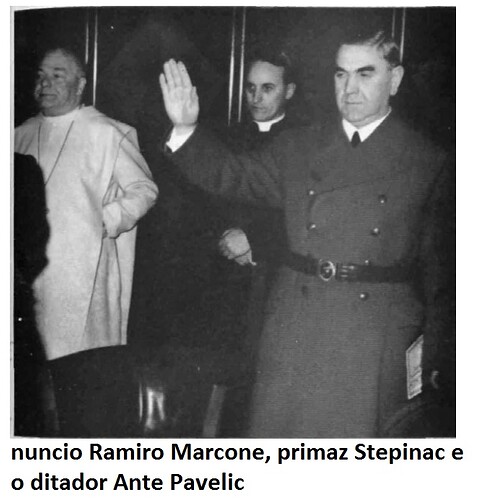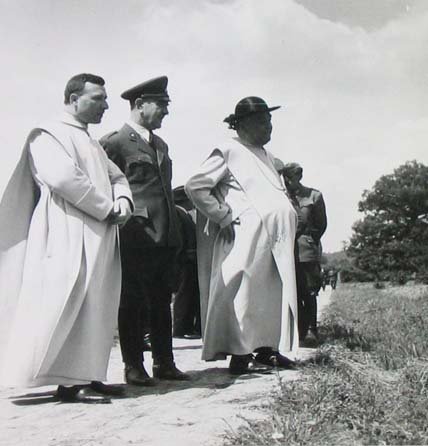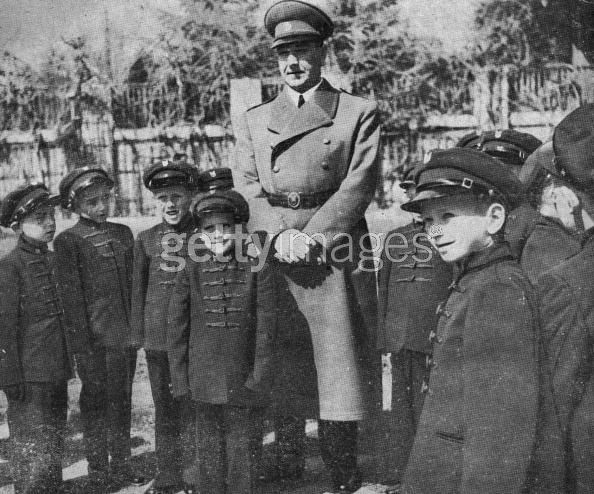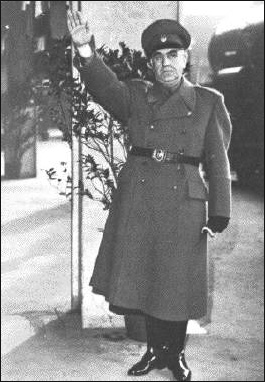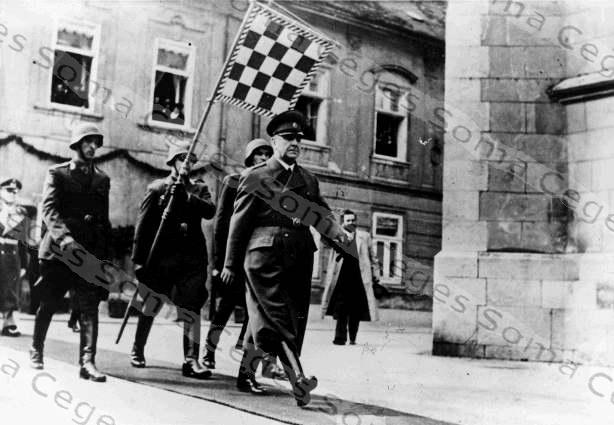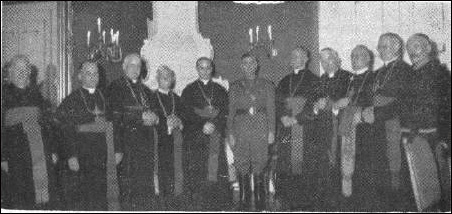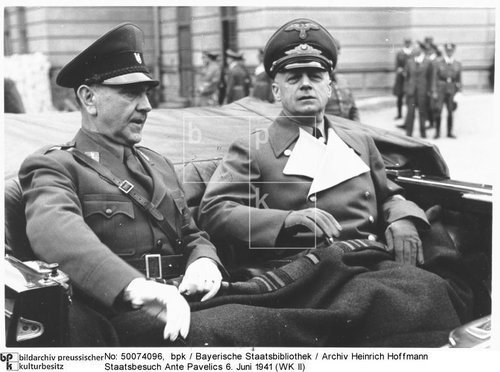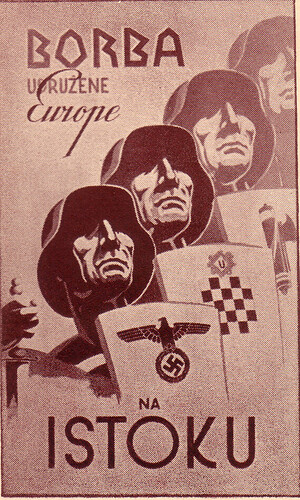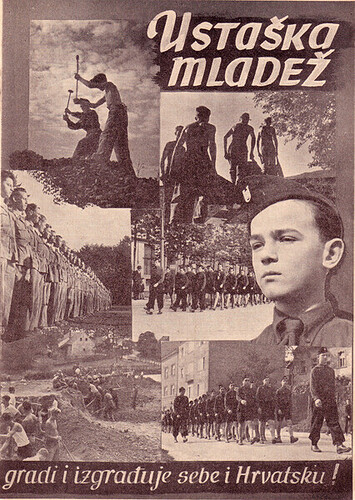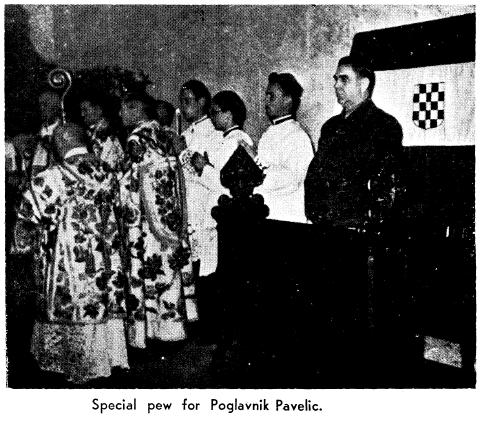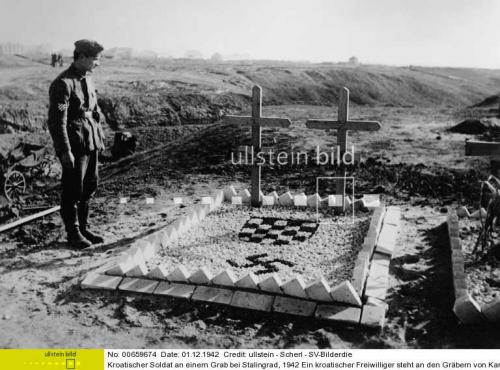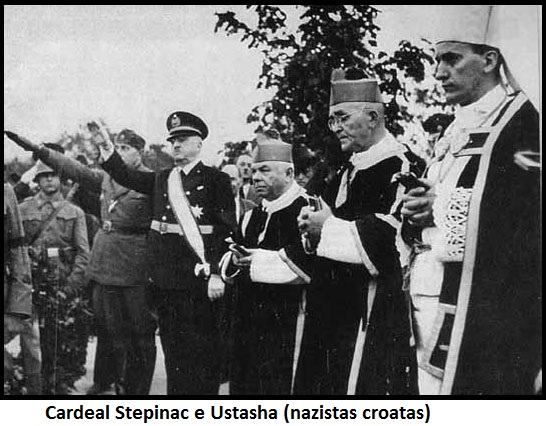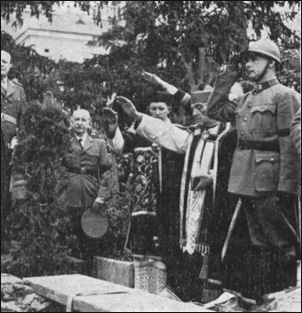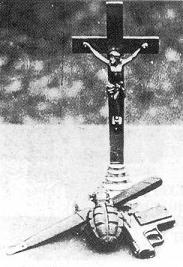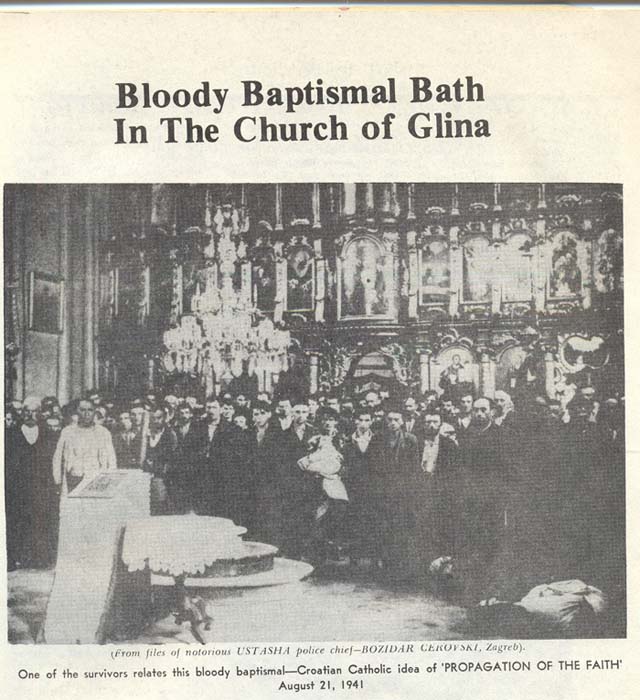I heard about the Ustachi group from WW2 the other day and was shocked by all that they did, especially concerning the camp that they had set up to murder their enemies. By and large, the Nazi’s shot or gassed most of their victims, but these Ustachi folks seemed to like the close contact way of murdering via knives or other sharp implements. They even developed a curved knife on the backside of a glove to more easily slit the throats of their victims. I was also disturbed that most of them claimed to be professing Roman Catholics, with even their clergy joining in with all the killing. Terrible, just terrible!
They were not alone in their treatment of people in the region.
Yep, what leccy said. They were by far not alone with their cruelties there.
The Second World War was fought VERY brutal in Yugoslavia by all participants.
The Ustaše were setting up concentration camps primarily for Serbs, Jews and Gypsies, though other people got there in as well (Croats who were not follwing their line, whether they were Communists, Anti-Fascists, or simply did not support the fascist cause). The knife you mean is called “Srbosjek” and means translated “Serb cutter”.
The Četniks massacred whole areas (primarily Croats and Bosnian muslims, though also Serbs if they were not loyal enough).
And the occupying forces were on occassions sweeping areas for partisans, where on occassions villages were burnt down and destroyed, if suspected that they shelter partisans.
The Partisans in the end massacred a lot of enemies and “perceived enemies” which meant that fleeing people were often targeted, as having “pro-fascist tendencies” etc.
The story is quite complex and the inhumanities between the groups have traces back to the Kingdom of Yugoslavia and to an extent, to WW1. The Serb-dominated Kingdom of Yugoslavia was slowly trying to eliminate traces of the non-Serb cultures in the Kingdom (partially by force), resulting in many very dissatisfied people (primarily Croats, Slovenes, Bosnians and Macedonians). The result of that was the poor performance during the Axis invasion of Yugoslavia 1941, as many units of non-Serb origin deserted.
After that, various puppet states were created (Nezavisna Država Hrvatska, the Ustaše state; Nedić’s Serbia, puppet state on the Serbian area; Kingdom of Montenegro, puppet state on Montenegrinian area) and some areas were put under direct control of either Germany, Italy, Hungary, Bulgagira or Albania (Italian protectorate, so in the end more or less also under Italy). The directly occupied areas were Slovenia (split between Italy and Germany), parts of Croatia (Hungary and Italy), parts of Serbia (Hungary, Bulgaria and Italy via Albania) and Maceddonia (Bulgaria).
The Ustaše were now a group opposing the Kingdom of Yugoslavia already in the thirties, conducting several terrorist attacks and assasinations (King Aleksandar I Karađorđević being the most successful). But they were forced to leave the country by large and fled to Italy. With the Invasion, they came back to Yugoslavia and founded the NDH. The long tensions between the Croats and Serbs broke then free and there were wild killings, with paramilitary groups forming up and fighting each other. That went so long until the NDH regime forbade non-army citizens to call themselves Ustaše and to take such actions (penalty being death). The Ustaše then followed a policiy to kill a third of the Serbs on their territory, convert a third to Catholicism (which would force them to “not be Serbs anymore”) and expel the remaining third.
Interestingly, several of the founding members of the Ustaše were Jewish, which created a strange situation that they opposed Jews, while having Jews among them.
On the other hand, before the war there had already been tendencies among some Serbs to carry out Serbianisation much faster (therefor violently). Those later formed the Četniks, under the command of Draža Mihajlović. They wanted to return the old Monarchy, just this time without non-Serbs. Their primary target were Bosnian muslims, whom they saw as a remainder of the Turks, which led to many massacres among the Bosnian population especially in the eastern parts of Bosnia. The other big target group were the Croats, being the second largest group in Yugoslavia and not Serbian. For brutality, they were not in any point more human than the Ustaše. Most often, they would use knifes to kill or torture their victims, sometimes pulling their skin off their still living victims. I talked to a survivor from Eastern Bosnia once, the stories are indeed terrible.
So these two groups started to fight, mostly on the backs of the civilian population of each others and on the own as well.
The occupying forces as well displayed brutality when they wanted, though it is interesting that Italy played the Ustaše and the Četniks against each other, resulting in the killing of whole villages with transport assistance from the Italian army.
Josip Broz “Tito” was among it all, forming slowly an communist and anti-fascist resistance, though he was ordered from Moscow to not strike yet, as it would worsen the relationships between Moscow and Berlin. When the Soviet Union was attacked, the Partisans stroke and first actions were taken in Croatia.
The Četniks started their fight before the partisans, being supplied by the British and did fight the Axis, though not particularly successful (though it can be noted, that the first town in Europe which was freed of German occupation in WW2 was a small Serbian town, freed by the Četniks). The Partisans and the Četniks were at first working together, which resulted in several Croatian Partisans getting killed by their “comrades”. The collaboration was uneasy, the Četniks wanting to restore the Monarchy while the Partisans were against it. Plus, the Partisans did not follow racial ideologies which would include to eliminate any of the native groups (which would turn out later to give a big boost of manpower to them, with people joining them who got between the fronts).
This unholy alliance started to break and in the autumn of 1941, the Četniks requested meetings with German commanders, offering them their assistance in eliminating the partisans. The Germans were unwilling and so the collaboration with the Germans did not start (yet). With the Italians, the Četniks got along quite well. During the first Anti-Partisan Offensive, the alliance definitely broke, with the Četniks attacking the Partisans who were already under attack by the Germans. At that period, British agents already suggested to not supply the Četniks any more and switch support to Partisans. This switch happened only slowly from 1943 on.
The most bizarre thing is that the Ustaše and the Četniks started to collaborate from 1942 on, with the Partisans as the common enemy being sensed as more dangerous to both of them. This of course did not stop atrocities commited by either the Ustaše or the Četniks.
This alliance of the Italians, NDH and the Četniks in the end forced the at first unwilling Germans to take part in it too.
War went on, battles were fought and the Partisans managed by 1944 to control big parts of Yugoslavia, with having soldiers from every part of Yugoslavia. Now they started to “get rid of” political enemies, which involved supporters of the Nedić regime, the NDH or other anti-communist or fascist organizations. The most famous would be the Bleiburg massacres after the end of WW2, when captured Slovenian and Croatian Domobrani, Ustaše and Četniks were returned by the British and for the biggest part massacred afterwards by the partisans.
Furthermore, Germans, Italians and Hungarians were partially expelled, communes exist till today though (interesting note, what I know the only town in Eastern Europe which had a German majority before the war and also afterwards stands in Croatia).
The war did not really stop 1945 in Yugoslavia, with underground organizations of the former fascists fighting up to 1950 against the new communist regime.
The general involvement of clergy can also be noted in the war and artrocities in Yugoslavia.
Catholic priests did take part in the forced conversion of Serbs (despite orders from the Archbishop of Zagreb, who ordered to perform conversions only when the person expressed it’s free wish to do so), some went so far to take part in killings.
Serbian Orthodox clergy was as well propagating to eliminate the “remnants of the Ottoman empire” (muslims) and the Catholic population as well, portraying them as the sole aggressor and sole perpetuator of crimes. Momčilo Đujić was an Orthodox priest and became one of the leading figures of the Četnik movement.
Islam clergy as well did it’s bit, with the Grandmufti of Jerusalem Haj Amin al-Husseini actively requesting the Muslim population of Bosnia to join the German SS (13th Division “Handžar”), promoting the killing of Jews among others.
I hope to give a short insight, maybe I drifted a little away.
Elk - your superior insights into Balkan matters are always enlightening. An interesting point I came across recently is that in the early part of the WW2 Balkan conflict, the Četniks were lionized by the western Allies as fighters for freedom and democracy against Germans and collaborators. This went so far, in the United States, as Četnik leaders such as Mihailovich featuring as heroes in comic books aimed at young boys. At that stage, the Allies had not quite got their heads around the Yugoslav labyrinth at that stage … Best regards, JR.
Having spent 18 months in the FRY of Bosnia, 7 months in the autonomous region Kosovo, 1 month each in FRY Croatia and Macedonia - I can say that the majority still do not understand the twist and turns of the region
Eastern Europe remains close to the dark ages in many repects.
As soon aas the “peace keepers” are gone, a lot of the bad stuff will return.
A retired senior SF guy I know who was native to the area returned there years ago when a lot of this was revving up.
He did not stay long and commented that it was craziness with no discernable reasoning and no solution.

